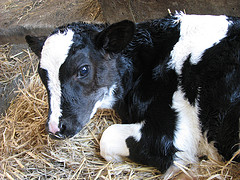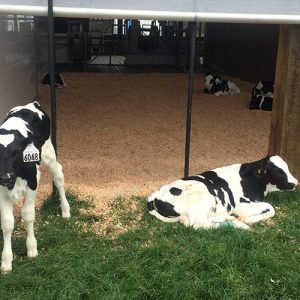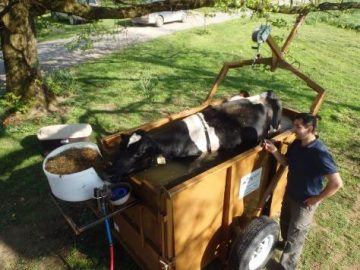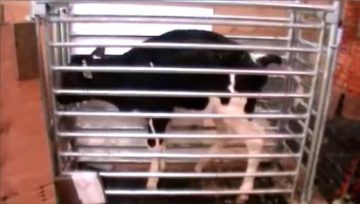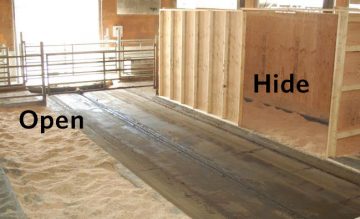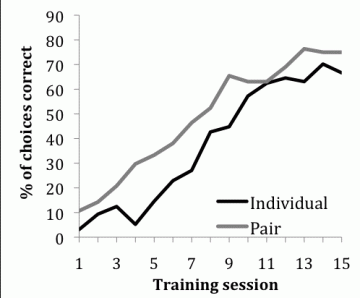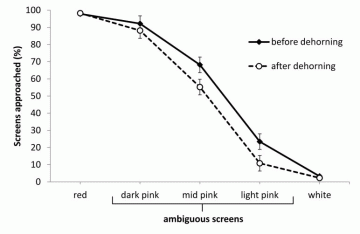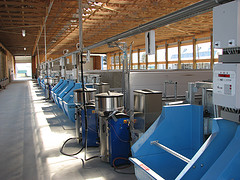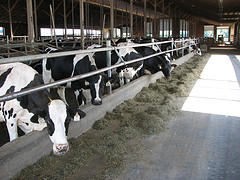January 6, 2020
Cows often become sick in the ‘transition’ period around calving, and many dairy cows are lame, but research to date has not considered how lameness may put cows at risk for transition cow diseases. In recent research at UBC we studied the development of lameness during the dry period, and the association between lameness and […]
Posted in 2020, Research Reports | Tagged with
October 11, 2018
Grooming behavior is expressed by many animals, including cows, and helps them maintain a healthy coat and skin. Cows can groom themselves and herd mates by licking. When housed in naturalistic environments, they also use trees or other structures to scratch parts of their body that are otherwise difficult to reach.
Posted in 2018, Research Reports | Tagged with
July 19, 2018
When farm animals become injured, farmers must decide whether to treat, transport, euthanize, or use on-farm emergency slaughter (OFES). OFES is one end-of-life option for animals that cannot be transported humanely but are fit for human consumption.
Posted in 2018, Research Reports | Tagged with
January 17, 2017
To provide some insight into understanding the public’s views of animal agriculture, we conducted two studies, one asked participants how they would describe the ideal dairy farm and the second where participants were surveyed before and after touring a dairy farm.
Posted in 2016, Research Reports | Tagged with
January 17, 2017
The European community has placed some effort into understanding the public’s views of animal agriculture, including the dairy industry. However, little is known about the expectations of the dairy industry by North American citizens. To provide some insight on this issue we conducted two studies, one where we asked participants how they would describe the […]
Posted in 2016, Research Reports | Tagged with
March 22, 2016
Providing quality care for recumbent (‘downer’) cows is a crucial role for the modern dairy farmer. Cases of poor quality care can harm both the cow and the reputation of the dairy industry. Providing good care can be both time- and labour-intensive. Producers must choose between available treatments, how to relocate the cow in the […]
Posted in 2016, Research Reports | Tagged with animal welfare
July 24, 2015
As anyone who has worked with cattle knows, cows produce a huge volume of urine and feces each day. All that manure quickly adds up, increasing the risk of slips and falls, mastitis and lameness. Accumulation of manure is also costly in terms of both bedding and labour costs. Consequently, dairy barns are typically designed […]
Posted in 2015, Research Reports | Tagged with animal behaviour, research, vol 15-2
February 1, 2015
Anyone who works in the dairy industry will be aware that there is tremendous variation in maternity pen design. Part of the reason for this variability is a lack of research on what types of environments are best for the cow while she is giving birth. Research at UBC has now recruited the cows’ help […]
Posted in 2015, Research Reports | Tagged with
August 29, 2014
Want smarter cows? Try raising calves with social companions. Previous work from the UBC Dairy Education and Research Centre demonstrated that calves raised in individual pens had more difficulty adapting to a group pen with five other calves after weaning than calves raised in pairs did. The more barren environment of the individual pen seemed […]
Posted in 2014, Research Reports | Tagged with animal welfare, social housing
April 1, 2014
Anyone who has dehorned a calf will tell you this is painful. Pain control for this procedure is now required in the new Code of Practice for Dairy Cattle. Pain during hot-iron dehorning can be controlled easily and inexpensively using a local nerve block like lidocaine. Unfortunately, burn injuries can be painful for many hours […]
Posted in 2014, Research Reports | Tagged with dehorning, depression, pain, pessimissm


